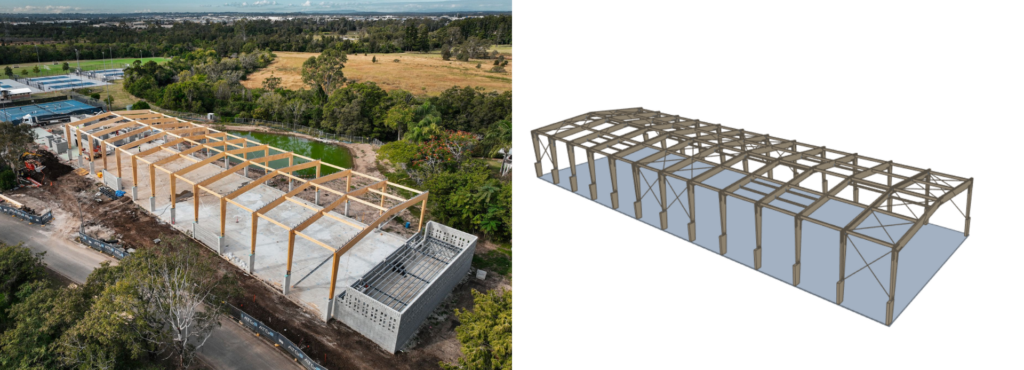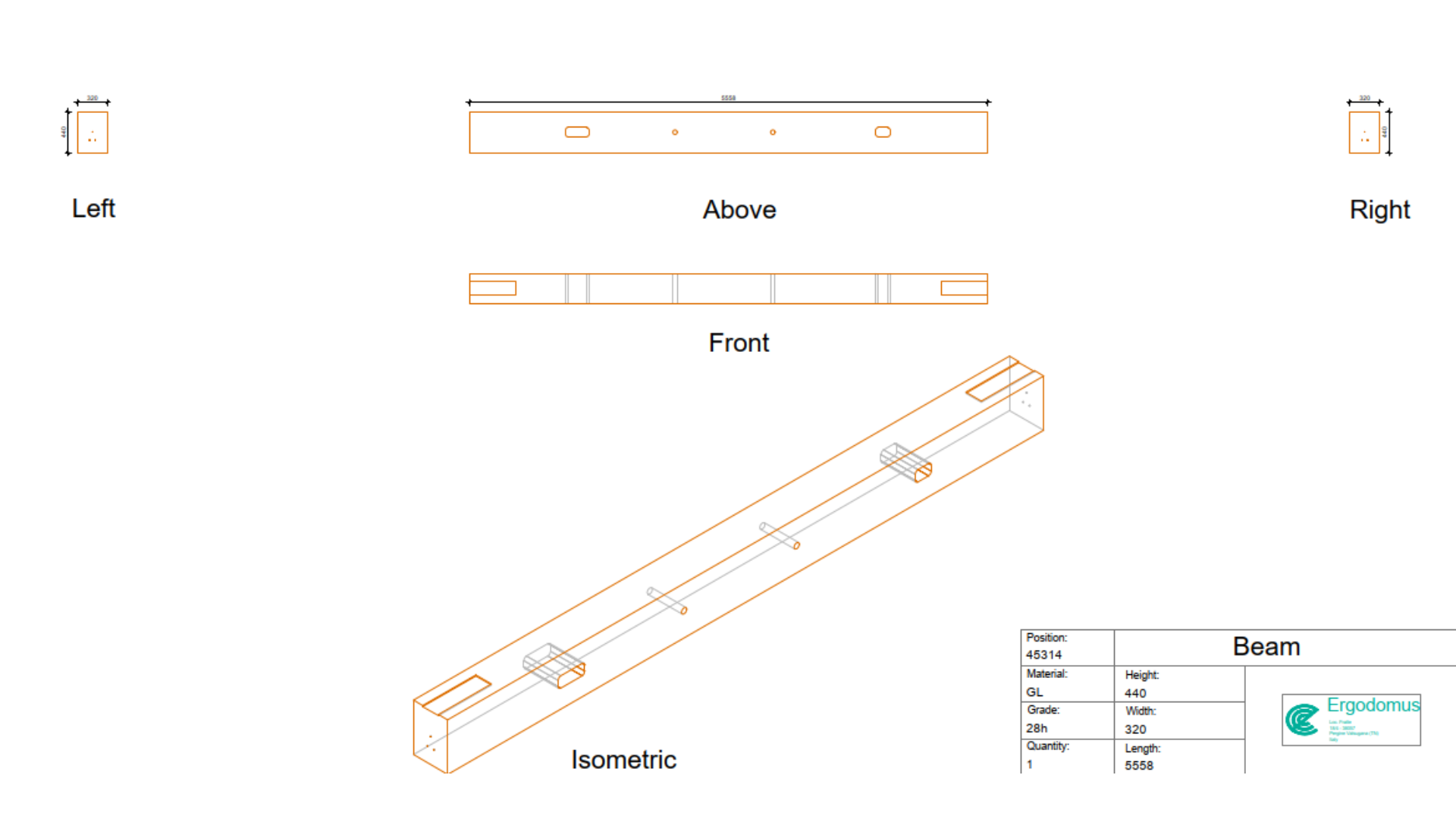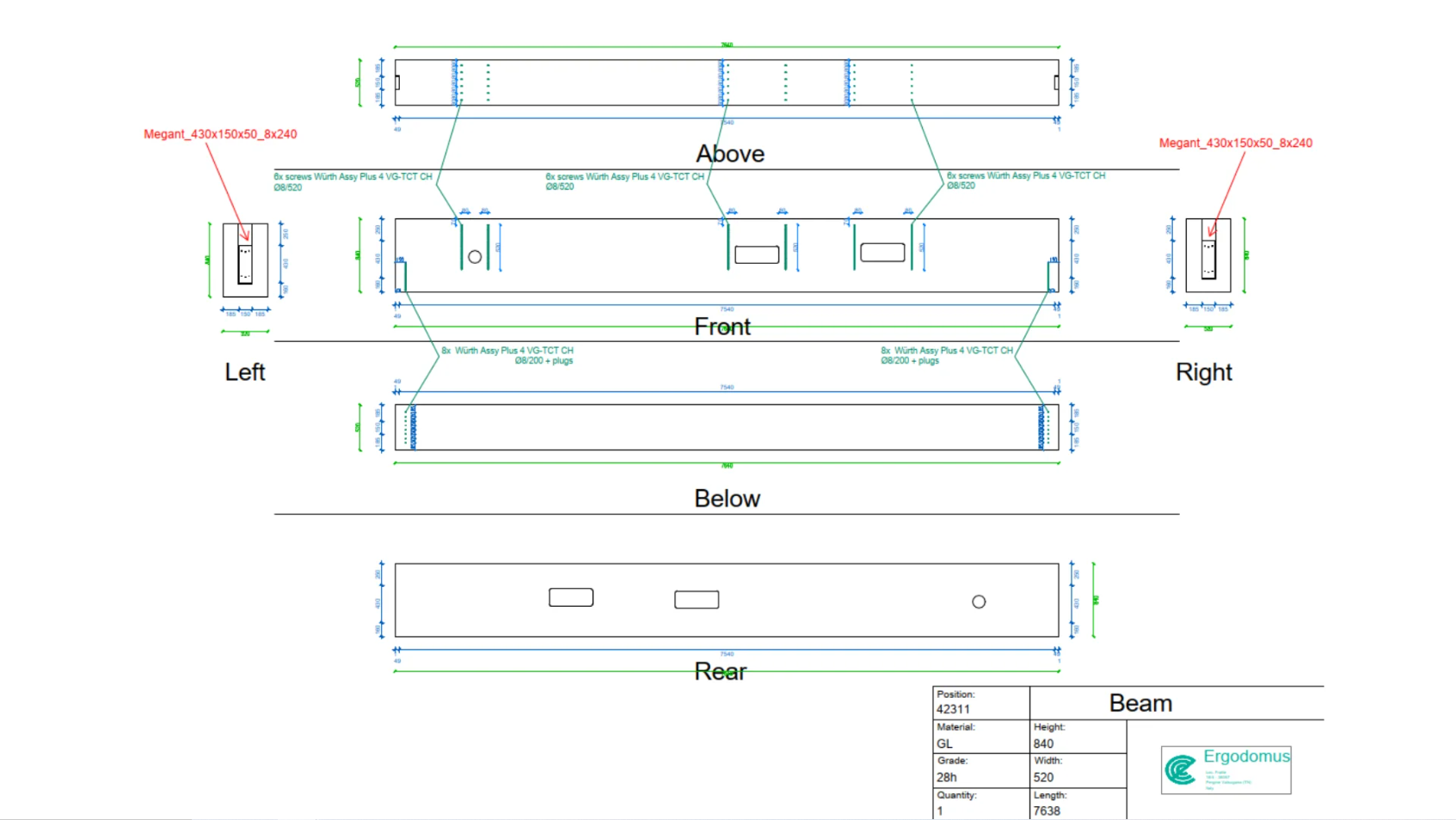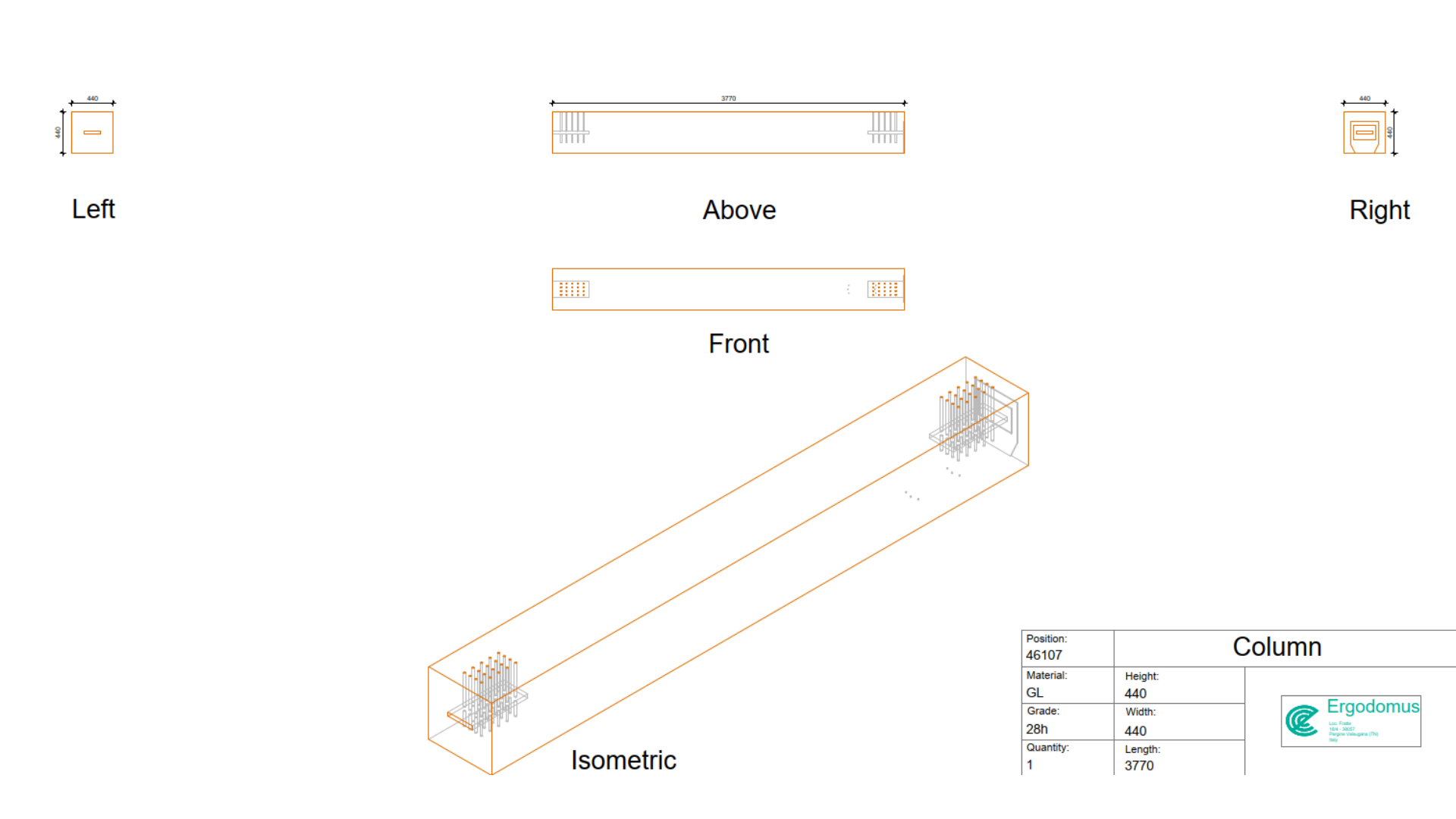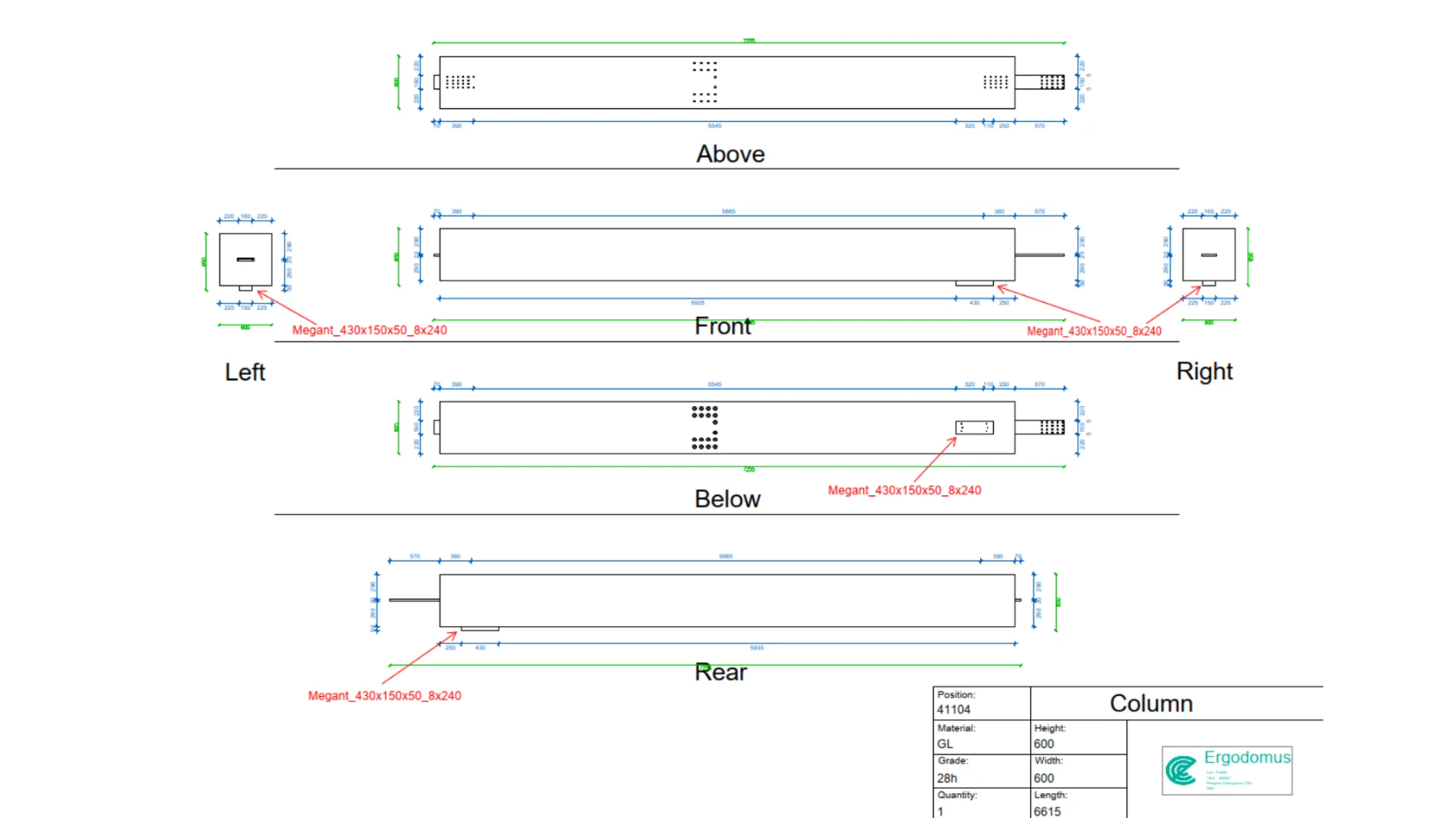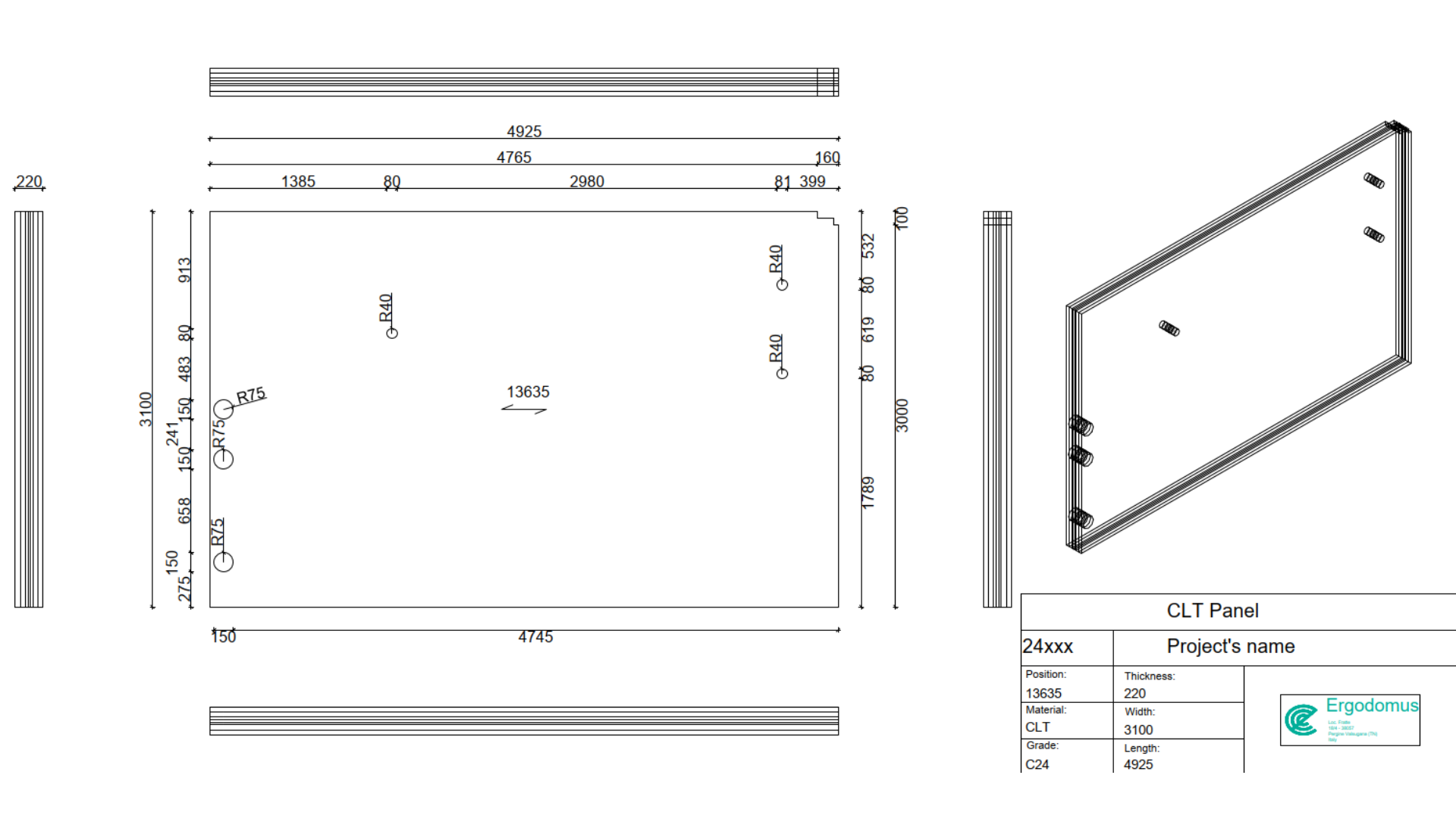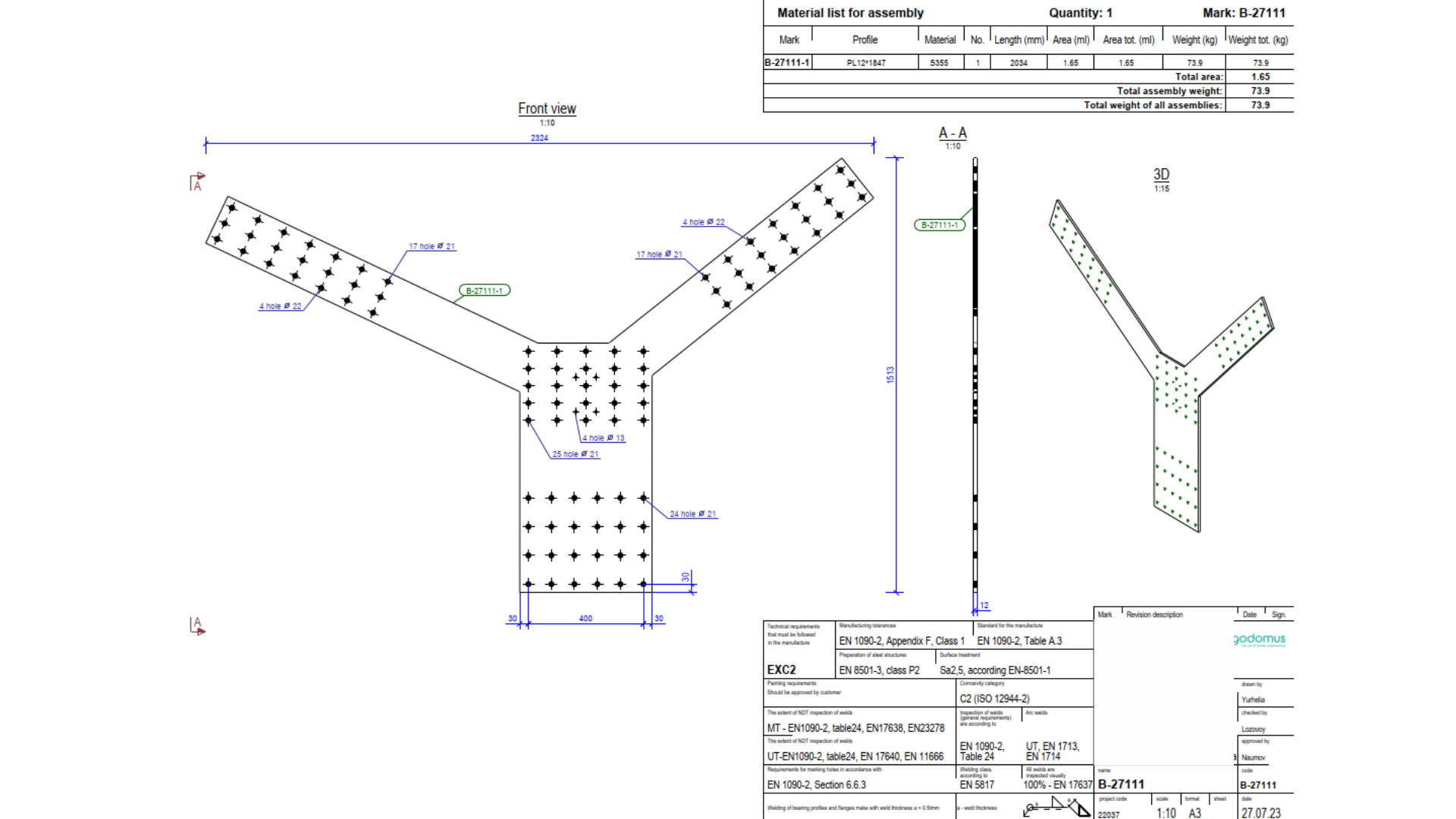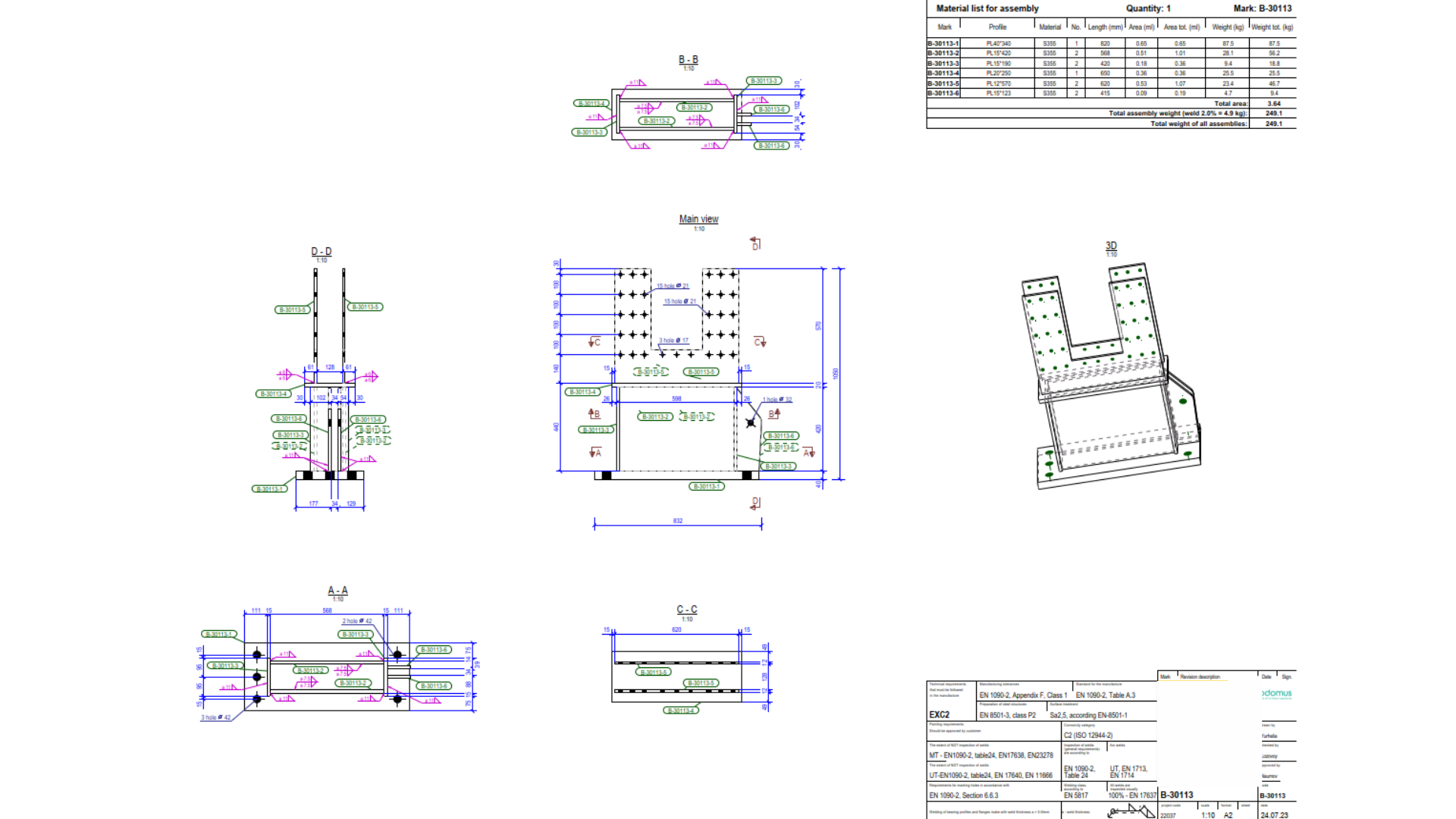UNVEILING KEY REASONS
As anticipated in the previous article, we are pleased to share with you the second part of our series on the importance of a timber engineer in projects.
In our first article (you can read the first part here), we highlighted expertise in value engineering, structural optimization, holistic approach, and detailed project planning. Now, we explore three more aspects: de-risking projects, innovative solutions and sustainability, and proficiency with 3D models up to LOD 400.
De-risking the project
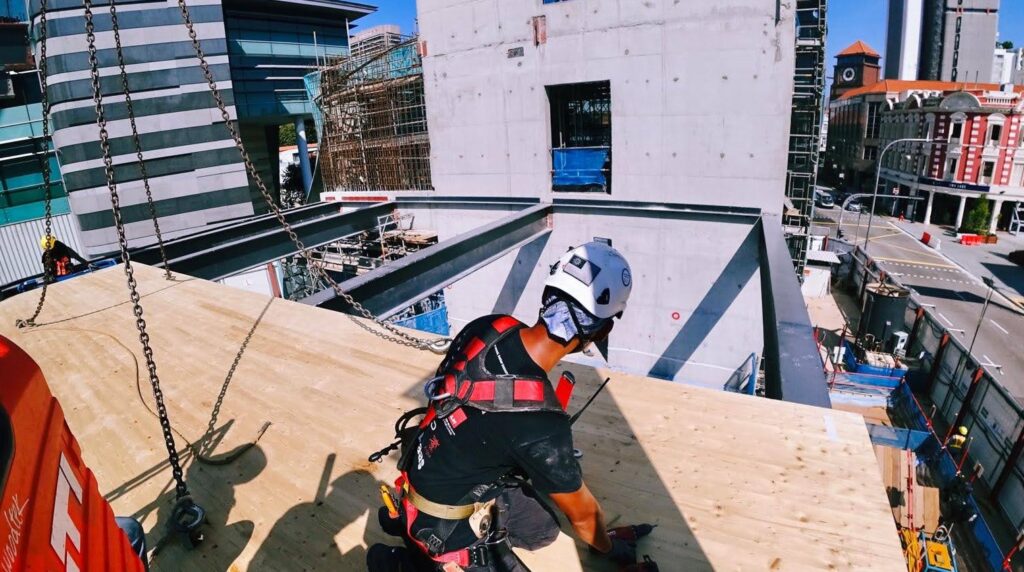
The importance of risk management, and consequently, a de-risk approach, which involves anticipating potential challenges and proactively addressing them in the design phase, has become increasingly pivotal for a few reasons:
- $ The great impact on the overall project costs, particularly in the case of large-scale structures. Containing costs is a critical aspect of project management, and adopting a de-risk approach is essential to achieving this goal. By identifying potential risks early in the project lifecycle and implementing proactive measures to mitigate them, Timber Engineers can avoid costly delays, rework, and unforeseen expenses ensuring that the project stays within budget constraints $;
- The increase of players involved in the design/construction: architects, contractors, engineers (MEP, structural, etc…), electricians, plumbers, facade suppliers and investors;
- The complexity related to the construction of each building, the increasingly stringent rules of the industry, and the building codes that have made each structure a complex organism .
An experienced Timber engineer can work on various significant aspects in advance. That contributes to lowering the risk and minimizing the possibility of errors and delays on site:
- designing with precision the best type of connections to use,
- deepening limits of CNC machinings in order to get the most out of the material,
- correctly work on, edit and read numerous types of documents/files,
- work on the logistics plan with a clear vision of the whole project pipeline,
- accurate detection of possible clashes,
- precise cost evaluation with careful analysis of the structure in all its aspects,
- drastically reduce assembly time by favoring off-site instead of on-site
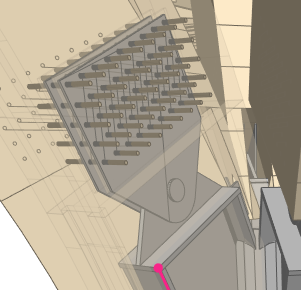
A steel connection of Sprint Canopy project (Singapore)
De-risking a project is a very serious and articulate topic. If you want to delve into other aspects of how to de-risk a project, we have written an article entirely dedicated to it.
Innovative Solutions and Sustainability
Their experience across sectors allows them to bring innovative solutions, such as integrating hybrid structural systems that combine timber with steel and concrete for better performance and aesthetics.
Combining multiple materials in construction leads timber engineers to innovate another crucial aspect: connections.
Connections are one of the most critical challenges, regardless of project size. A 360-degree knowledge of connections enables timber engineers to find innovative solutions.
This approach improves various aspects of the project significantly. As sustainability becomes vital in construction, timber engineers contribute significantly. By selecting eco-friendly materials and designing energy-efficient structures, they can enhance the environmental value of the project.
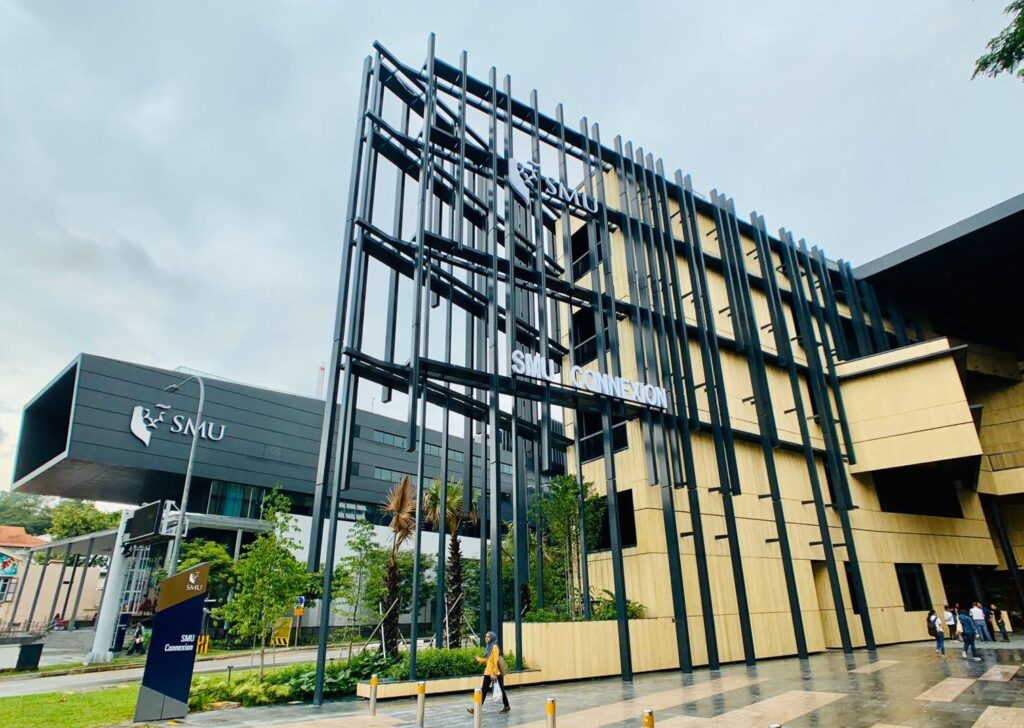
At SMU (Singapore Management University), collaboration was essential as we worked alongside diverse teams from around the world, each playing distinct roles in constructing the building. Given its hybrid system, the project required the seamless integration of various materials: concrete, steel, and timber. Despite their distinct characteristics, it was essential for the steel, concrete, and timber components to synergize and work cohesively in the hybrid system structure. This synergistic integration was crucial to fulfill the project’s primary goal: maximizing the individual strengths and benefits of each material.
Crucial Role in Digital Modeling and Level of Development
The digital model, an essential tool not only for the Timber Engineer but for all the players involved in the project is much more than just a 3d model. Digital models can be considered similar to a “digital twin” since they are not just a collection of lines; a complete digital model gives a lot of precise and precious information, such as quantities, costs, logistics, assembly sequence, environmental impact, etc…
Timber Engineers meticulously transform every aspect of their work into digital models where each component is marked with a unique ID and accompanied by detailed specifications such as dimensions, weight, cost, and supplier information. When shared with other designers, these digital twins provide a comprehensive collection of necessary super precise details.
For Timber Engineers, the accuracy of digital models is essential, as they serve as the foundation for creating CNC files. These files are directly employed in the manufacturing of timber elements destined for on-site assembly.
Digital model means that if there is a mistake in the LOD 400 model, the same mistake will be in the element produced in the factory and machined by the CNC robots: What You Draw Is What You Get (WYDIWYG). Below a few examples of what a LOD 400 (the highest LOD) Production Drawings looks like. The same accuracy and detail of the elements in these production drawings can be found in the LOD 400 digital model.
By providing a clear and detailed visualization of the project, these models help in preemptively identifying and addressing potential issues, thus streamlining the construction process.
Agnostic Approach
Finally, it’s crucial to underline the fact that the role of a timber engineer stands out for its impartiality and independence. Unlike some other professionals involved in the project, a timber engineer cannot be tied to any specific brand or manufacturer. This ensures that recommendations and decisions are based solely on what best suits the project’s requirements and goals. This agnostic approach guarantees that the timber engineer’s decisions are unbiased and purely driven by the pursuit of optimal solutions
Conclusion
In these two articles (read the first article here), we explored several points that highlight how holistic and crucial the timber engineer’s role in mass timber projects is. Their contribution to value engineering is profound, ensuring that projects are not only economically viable but also structurally solid, sustainable, and aesthetically pleasing.
As we saw (and daily see) the field of mass timber construction evolves, the expertise of timber engineers will continue to be a cornerstone in realizing innovative, efficient, and sustainable structures.
This article is the second part of another article where we delve into more than one good reason why the timber engineer is the specialist you need on your project. Click on the image below to read the “Part 1“, where we go in-depth on the first three key reasons why (and when) You Should Involve a Timber Engineer in Your Project.

